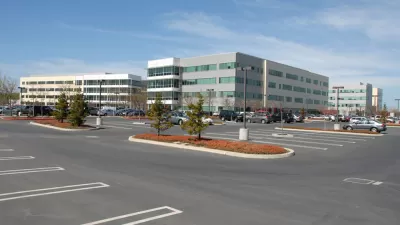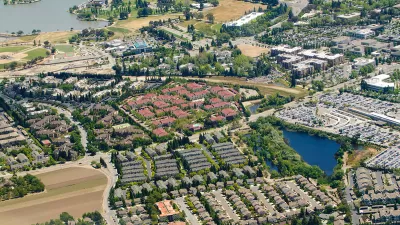Facing a shortage of affordable housing, Westchester, New York, is considering using the excess parking lots of local office park campuses for new housing development.
"Generating both praise and criticism in a county with plenty of expensive housing but not much of the budget-friendly kind, a Department of Planning report urges towns and villages here to use land in existing office parks as sites for new housing, some of it for moderate-income families.
There are two big reasons that he believes the plan would work, Richard Hyman, an independent housing and planning consultant hired by the county for the study, says. To start with, office parks are typically created with more parking than they need, to meet standard zoning requirements. Additionally, the complexes are often built in campuslike settings, with room for more construction - in this case new residential buildings.
The recommendations came in response to a severe shortage of moderate-income housing in Westchester. Demand is expected to reach 19,083 units by 2015, yet between 2000 and 2005 only 970 units had been built, according to Deborah DeLong, the county's housing director.
Because the roads and utilities in existing office parks are already in place, the study asserts, further development of those properties would not be as costly for developers.
Builders could afford to set aside as much as 15 percent of the housing for moderate-income families without relying on public funds, Mr. Hyman said.
Put another way, said Robert F. Weinberg, an Elmsford developer of mixed-use projects in Westchester: "Here we have already cut down all these trees, put in the sewer and water lines, so there's no hole to be dug, no addition of parking lots and no extra runoff. It makes sense economically and environmentally.""
FULL STORY: Parking Space as Living Space?

Maui's Vacation Rental Debate Turns Ugly
Verbal attacks, misinformation campaigns and fistfights plague a high-stakes debate to convert thousands of vacation rentals into long-term housing.

Planetizen Federal Action Tracker
A weekly monitor of how Trump’s orders and actions are impacting planners and planning in America.

In Urban Planning, AI Prompting Could be the New Design Thinking
Creativity has long been key to great urban design. What if we see AI as our new creative partner?

King County Supportive Housing Program Offers Hope for Unhoused Residents
The county is taking a ‘Housing First’ approach that prioritizes getting people into housing, then offering wraparound supportive services.

Researchers Use AI to Get Clearer Picture of US Housing
Analysts are using artificial intelligence to supercharge their research by allowing them to comb through data faster. Though these AI tools can be error prone, they save time and housing researchers are optimistic about the future.

Making Shared Micromobility More Inclusive
Cities and shared mobility system operators can do more to include people with disabilities in planning and operations, per a new report.
Urban Design for Planners 1: Software Tools
This six-course series explores essential urban design concepts using open source software and equips planners with the tools they need to participate fully in the urban design process.
Planning for Universal Design
Learn the tools for implementing Universal Design in planning regulations.
Appalachian Highlands Housing Partners
Gallatin County Department of Planning & Community Development
Heyer Gruel & Associates PA
Mpact (founded as Rail~Volution)
City of Camden Redevelopment Agency
City of Astoria
City of Portland
City of Laramie





























